Phase 1 | (Week 1 to 4)
- Gosia Siwiec

- Jan 30
- 44 min read
Updated: Mar 16
Research and Discover
Starting GDE750, the final module of my course, feels surreal. There’s a mix of emotions—excitement about the journey ahead and a bit of pressure knowing this is my last chance to get it right. It’s a once-in-a-lifetime opportunity, and I want to make the most of it.
This course has been life-changing for me, and I’ll always be grateful for the experience, no matter the outcome. My goal for this final project is to create something meaningful—something that truly reflects my growth and creativity. I hope it’s a piece I can look back on one day with pride and a smile.
Reflections:
My career & aspirations
What inspires me
Looking back at the start of the course and the mood board I created in Week 4, I realise that, even after a year, I still agree with most of what I put there. I have grown a lot as a designer, but the things that inspire me have remained largely the same. One of the biggest challenges I’ve faced is defining my signature style—after all this time, I am still refining it.
The aspects I love and see reflected in my designs are minimalism, a clean and professional aesthetic, and compositions that are easy on the eye. I aim to show just enough to be intriguing but not enough to be entirely understood at first glance. Texture plays a crucial role in my work, and since GDE710 Week 4, I’ve found myself drawn to skies—perhaps because I spend too much time looking out while on the constant move, trying to get to places!
Feedback
The feedback I’ve received from my tutors has highlighted both strengths and areas for improvement. It’s reassuring to know my designs communicate well, are well-researched, and professionally presented. I’m also proud of how quickly I’ve adapted to tools like Blender and Figma in the last module.
However, a common critique is that my work can feel too slick and polished—sometimes cold or uninviting. This has made me reflect on how I can add warmth and emotional depth while staying true to my minimalistic style. I also need to refine my strategy, narrow my target audience, and incorporate more storytelling to create a stronger connection.
Moving forward, I want to balance clean, professional design with more engaging and relatable elements. This feedback has given me a lot to think about lately, and I’m excited to evolve my work in new directions.
Here’s what I’ve created so far:
GDE740- Main Subject Travel
Project 1: Self-Initiated Project (Folbie)
For my self-initiated project, I focused on tackling the emotional and physical challenges that frequent travellers often face. Inspired by my own experiences, I designed Folbie—a foldable blanket that doubles as a plushie, giving people comfort, portability, and a sense of home while on the move. I carried out a lot of research, including surveys, interviews, and observations, which helped me understand travellers’ needs for sustainable and customisable products. Folbie was designed to meet those needs, with features like personalisable patches, scent customisations, and eco-friendly materials made from recycled polyester. The final product was compact, portable, and came with seed paper packaging to stay true to the sustainability theme. I also worked on branding Folbie to feel calm and inviting, making it a practical yet comforting companion for anyone on the go.
Project 2: Science Museum (Voyager)
For my Science Museum digital archive project, I designed an app prototype to make exploring the museum’s artefacts engaging and enjoyable by combining gamification, storytelling, and personalisation. Focused on the theme of travel, the app prototype featured elements like 2D silhouettes, 3D models, quizzes, and an AI-powered feature that imagines how artefacts might evolve in the future, all developed using tools like Figma, Illustrator and Blender. User feedback praised the playful and interactive design but also highlighted areas for improvement, leading to the inclusion of accessibility features. This project was an exciting opportunity to reimagine how digital tools can bring historical archives to life in innovative and user-friendly ways.
GDE720- Main Subject My Polish Heritage
This project explored how Polish heritage could be preserved and revitalised to resonate with modern audiences while fostering deeper connections to cultural roots. In collaboration with the Polish School in Jersey, the project blended tradition with contemporary storytelling through a variety of mediums. Key outcomes included an app mockups that fostered community engagement, posters promoting a cultural podcast series, cooking classes paired with a digital cookbook, packaging designs for Polish restaurants, and a magazine narrating the school’s remarkable story.
GDE730- Main Subject My Freelance
How can a simple shape, like a square, become a creative and engaging narrative that educates and inspires? Through "The Hand", I designed a book narrated by a hand character, telling the story of the square’s journey and its importance in digital design. The project extended beyond the book with aftercraft elements like posters and merchandise, encouraging readers to connect with the story in new and interactive ways.
I will continue to explore "travel" as the subject for my MA because it’s a massive part of my life and something that never stops inspiring me. The past two years, I’ve spent so much time traveling that I felt like I was practically living at the airport. This constant movement gave me a unique opportunity to experience the highs and lows of travel firsthand—from the excitement of exploring new places to the challenges of staying comfortable and connected on the go.
For this module, I began by selecting themes and answering key questions to define my research question and shape my approach to both design and research. In this final module, I want to combine my travel lifestyle as the core focus. My goal is to graduate with a project that not only showcases my skills but also reflects how travel and my past experiences have influenced and shaped me as both a designer and a person.
Exploring the Travel Themes:
Time: More than just waiting
Time in travel spaces fascinates me because it exists in a strange, in-between state. Waiting for a flight, a train, or a bus can feel like time is being "killed," yet it’s also a deeply reflective moment for many. What do people do with this time? Some immerse themselves in distractions, while others observe, reflect, or even connect with strangers.
Language: The signs, sounds, and silences
Airports have their own unique "language," a combination of what is seen, heard, and even what goes unnoticed. From signage and symbols to announcements and ambient sounds, this language is meant to guide travellers, yet it often feels incomplete or overwhelming. I’m fascinated by what this language communicates—and what it doesn’t. What happens when certain travellers are left out, either because they can’t hear, can’t read, or simply don’t understand the cues?
Passports: A symbol of unity in diversity
Passports are a perfect metaphor for the duality of travel—they highlight both our differences and our shared humanity. Each passport reflects a unique identity, nationality, and story, yet they all serve the same purpose: allowing us to move and connect. This theme is especially interesting because it reminds me how, despite our cultural, linguistic, and historical differences, travel brings us together in a shared experience.
Airports: “Non-places”
The concept of airports as "non-places" deeply intrigues with me. These are spaces where identity dissolves, where people are reduced to passengers, and where connections often feel fleeting or impersonal. Yet, beneath this anonymity, there is so much humanity—quiet emotions, untold stories, and unnoticed connections.
People: So Different, yet united by the same goal
One of the most fascinating things about travel spaces is the sheer variety of people you encounter. Everyone has a different story—where are they headed? What’s their day been like? Or their year? Yet, for a brief moment, we’re all in the same place, waiting for the same plane, train, or bus, united by the same goal: to get somewhere. It’s amazing to think about the lives intersecting in these fleeting moments.
Travel Places: What stays there unnoticed?
Travel spaces are full of unnoticed stories and elements—whether it’s the architecture, the people in the background, or the small details we overlook while rushing to our destinations. I’m particularly drawn to uncovering these hidden aspects, from the unnoticed individuals who inhabit these spaces to the quiet corners that hold untapped potential for connection or comfort.
I wish I could explore all of these themes because they are all incredibly appealing, but I’ve learned from past mistakes that taking on too much never ends well. This time, I’ve decided to focus on Travel Places: What stays there unnoticed? because I feel there is so much depth and potential to uncover within this topic. It’s an area that intrigues me deeply, and by narrowing my focus, I hope to create a project that is both meaningful and manageable, allowing me to truly explore the hidden aspects of travel destinations.
Exploring the Unnoticed Aspects:
For the next 24 weeks, I’ll be diving into transit spaces such as airports, train stations, bus terminals, and metro stations. Airports will be my primary focus, as they are where I’m spending most of my time. I plan to build on observations I’ve already made and use this exploration to narrow down specific elements that capture my attention. This process will guide me in collecting items and inspiration to shape my design work.
To document my findings, I’ll use short videos, photography, and curate a collection of intriguing pieces I come across, which will later inform my creative process. An observational diary will also help me record what I notice—people’s behaviours, compelling stories, distinct scents, and the unique atmosphere of these spaces. I’m really excited to start and can’t wait to see where this journey will take me!
Problems I am aware of which need to be solved:
Confusing signage & navigation issues
Poorly placed, unclear, or inconsistent signs make it difficult for travellers—especially those unfamiliar with the area or who don’t speak the local language—to find their way.
Overcrowding & lack of personal space
Packed buses, subway cars, and airport terminals leave little room to breathe, making transit stressful and uncomfortable, especially during peak hours.
Unreliable or delayed transportation
Cancelled flights, late buses, and unpredictable schedules disrupt travel plans, causing frustration, missed connections, and longer wait times.
Poorly maintained infrastructure
Broken escalators, dirty restrooms, worn-out seating, and out-of-service elevators create inconvenience, particularly for those with mobility challenges.
Accessibility barriers for disabled & elderly travellers
Many transit spaces lack proper wheelchair access, tactile guidance for visually impaired travellers, and sufficient assistance for those in need.
Nowhere to go
We rush through airports, train stations, and bus terminals without thinking twice about the people who stay behind. For many experiencing homelessness, these transit hubs offer temporary shelter—places to escape extreme weather, find a seat to rest, or simply exist unnoticed. Yet, they face constant challenges: security pushing them out, lack of access to food and restrooms, the silent judgment of passersby, and the daily struggle of hunger. In spaces built for movement, those with nowhere else to go are often treated as a problem rather than people in need.
But are they truly unnoticed, or are they intentionally avoided? Do we look past them out of discomfort, guilt, or simply because transit spaces are designed to keep us moving rather than stopping to see?
This is a real problem, yet one that many choose to ignore. Public transportation is built to connect people, yet it often excludes the most vulnerable. Instead of asking how to remove homeless individuals from these spaces, perhaps the real question should be: How can we, as a community or as designers, make a difference?
The Unseen Crisis
Public transit stations, bus stops, and underground terminals serve as lifelines for millions of commuters every day. But for many individuals experiencing homelessness, these spaces are more than just transit points—they are temporary shelters, places of refuge from the cold, and often, the only places where they feel safe.
A Growing Issue in Our Cities
Across urban centers, it's common to see people seeking shelter in bus stations, subways, and train platforms. The reasons are clear: these places offer partial protection from the elements, some level of security, and, in some cases, access to public restrooms or heating. However, this situation presents a deeper societal issue—why are so many people forced to turn transit spaces into makeshift homes?
Rising housing costs, lack of sufficient social support, and mental health struggles contribute to the increasing visibility of homelessness in transit areas. While commuters may pass by without much thought, those sleeping on benches or seeking warmth in subway corridors are fighting a daily battle for survival.
Why We Need to Raise Awareness
Ignoring the issue does not make it disappear. The presence of homeless individuals in transit spaces should serve as a wake-up call rather than an inconvenience. Instead of treating them as a problem to be removed, society must address the root causes of their situation.
By raising awareness, we can:
Instead of viewing homelessness as a nuisance, we can recognise it as a humanitarian crisis requiring collective action.
Awareness leads to advocacy, which can push for better policies on housing, mental health services, and employment support.
Every person experiencing homelessness has a story—raising awareness helps dispel misconceptions and encourages compassion.
The Power of a Warm Meal
While long-term solutions like affordable housing and job support are crucial, small acts of kindness can make an immediate difference. One of the simplest yet most impactful ways to help is by providing warm meals.
Many homeless individuals go entire days without proper food. A nutritious, hot meal provides much-needed energy and comfort.
Eating a warm meal in a welcoming environment can restore dignity and offer a moment of respite from daily hardships.
Meal programs often serve as entry points for further assistance, connecting individuals to shelters, medical care, and job programs.
Moving from Awareness to Action
Recognising the struggles of those seeking shelter in transit spaces is just the first step. Taking action—whether through donating meals, volunteering, or advocating for better social services—can create meaningful change.
Instead of walking past someone in need, consider how a small effort—like a warm meal—could make a difference in their day. A little compassion goes a long way, and together, we can work toward a future where a simple gesture—like offering a warm meal or a kind word—can brighten someone's day and remind them they are not invisible.
References
Homelessness in Transit Spaces:
Increasing Use of Public Transport for Shelter: Data from Transport for London revealed a significant rise in the number of homeless individuals seeking refuge on night buses, with reports increasing by 121% between 2012/13 and 2015/16.
Mayor's Initiative to Address Homelessness on Transport: In response to the growing number of individuals sleeping on public transport, the Mayor of London funded an outreach team dedicated to assisting those on Night Buses, the Tube, and Overground services, connecting them with accommodation and support services.
The case of a homeless couple living in a disused Birmingham bus stop.
Benefits of Providing Warm Meals:
Government Support for Charities: The UK government has recognized the critical role of charities in providing food, shelter, and warmth, allocating grants to support these services, especially during challenging times.
Community Initiatives: Organisations like AMURT UK operate feeding programs in London, offering warm, nutritious meals to homeless and vulnerable individuals, thereby addressing food poverty and providing immediate relief.
Volunteer Efforts: Groups such as FoodCycle provide free meals and community dining experiences, welcoming individuals from all walks of life, including those experiencing homelessness, to enjoy nutritious food and social interaction.
Understand Homelessness
Before taking action, it's essential form me to fully understand the issue.
How we can truly help
Watching these videos about homelessness has been a deeply eye-opening and emotional experience. They force us to confront something we often walk past without truly seeing- the human lives behind the label of "homeless." Each story, each face, each journey shown in these videos highlights not just the struggle of living without a home but the resilience, dignity, and untold stories of individuals who continue to fight through impossible circumstances.
As I reflect on these videos, one idea resonates above all else: homelessness isn’t just about the absence of a roof- it’s about the absence of stability, recognition, and belonging. Too often, we try to "fix" homelessness through transactional acts of charity, like handing over a few coins or offering some food. While well-intentioned, these gestures rarely address the deeper, more human needs of those experiencing homelessness- the need for dignity, choice, and encouragement to keep going.
Understanding first
The first video struck me with its powerful imagery of life on the streets. The voices of those interviewed conveyed a profound truth, if we don’t take the time to understand homelessness, our actions, however noble, might fail to address the real issues. Many of the individuals featured spoke not just about their physical struggles- finding food, staying warm- but also about the emotional toll of being unseen, ignored, or judged by society.
Homelessness is not a monolithic experience. Every individual has a different story. Some have lost jobs, some have fled unsafe homes, and others struggle with mental health or addiction. The second video especially emphasised how complex these situations can be and how society often looks down on homeless individuals instead of looking at the systemic issues that contribute to their circumstances.
Before we can help, we must stop assuming and start listening. Understanding someone’s journey is the first step toward offering meaningful support. The third video underscored this point with personal stories of those who had once been homeless and what finally helped them- small acts of kindness, words of encouragement, and, most importantly, being treated as equals.
Time and kindness over money
A recurring theme in the videos is that kindness and connection are often more valuable than material handouts. Many of those interviewed spoke about how much it means when someone takes the time to talk to them or even acknowledges their existence with a smile.
It made me realise how important it is to spend time with those who are vulnerable, even in small ways. Conversations can make people feel seen and respected, which is a stark contrast to the alienation they face daily. I think this is what struck me most- how little it takes to restore a sense of humanity to someone who feels invisible.
At the same time, these videos also showed that the homeless often feel trapped in a cycle, unable to move forward. Providing tangible resources like warm meals or essential supplies is important, but giving people a chance to reclaim control over their lives is even more so. Whether it’s through small choices, like selecting their own meal, or larger opportunities, like accessing housing or employment, empowering them with agency is key.
What about creativity?
As I reflect on my own skills and potential contributions, I’m struck by how creativity and design can play a role in helping the homeless. The visuals and narratives in the videos were impactful because they humanised homelessness- they told stories that cut through stereotypes and showed the humanity of those on the streets.
This makes me think about how design can do the same. Graphic design, for example, has the power to change perceptions, raise awareness, and connect people. A thoughtfully designed project could create opportunities for the homeless to feel seen, supported, and encouraged. It could also educate the public, fostering empathy and inspiring meaningful action.
Perhaps there’s a way to combine these ideas- a design that not only provides practical support but also conveys warmth and care. Something that acknowledges the unseen journeys of the homeless while offering them tangible help and emotional encouragement.
The spark of an iIdea
As the videos come to an end, I’m left with more questions than answers, but also with a sense of clarity about what truly matters. Helping the homeless is not about quick fixes or one-size-fits-all solutions. It’s about meeting people where they are, respecting their individual journeys, and offering small moments of warmth and hope along the way.
This reflection has planted the seed of an idea- what if there was a way to give the homeless not just essentials, but a sense of dignity and choice? Something as simple as a small token or voucher that could be redeemed for food or other necessities, paired with a message of encouragement to remind them that they matter.
It would be a small gesture, but one with the potential to create connection and empowerment. And perhaps the design could incorporate elements from transit spaces- places that, like the homeless themselves, are often overlooked but carry so much meaning. The journey from invisibility to hope starts with seeing and acknowledging, and maybe design could play a part in that.
The Art Of Noticing
Rob Walker
Through my research on The Art of Noticing by Rob Walker, I have gained a deeper understanding of how mindfulness and observation can transform the way we engage with the world. The book emphasises paying close attention to everyday surroundings, offering creative exercises that encourage curiosity and a heightened awareness of the often-overlooked details in our environment. One idea that stood out to me was the use of a viewfinder to reframe ordinary scenes, shifting how we perceive the mundane. This aligns closely with my project, where I collect disregarded transit items and reimagine them as art pieces.
Arte Povera
Originating in Italy during the 1960s, Arte Povera (meaning "poor art") involved artists using commonplace materials such as rags, twigs, and discarded items to challenge the commercialisation of art and emphasise simplicity. This movement is experiencing a resurgence, with contemporary artists and fashion designers incorporating its principles to critique consumerism and celebrate resourcefulness.
Recycled Art Installations
Many contemporary artists create installations using found and discarded objects to comment on environmental issues and consumer culture. For example, the exhibition "The Poetics of Dimensions" in San Francisco showcased artworks made entirely from materials like plastic bags and shoelaces, challenging viewers' perceptions of waste and highlighting the potential for transformation inherent in discarded items.
Research Question 1
I refined my research question to ensure it was focused but broad enough to allow flexibility as the project evolves:
"How can graphic design be used to highlight the overlooked aspects of transit spaces, to foster awareness, inclusivity, and human connection?"
This question feels like a strong starting point because it allows me to explore various themes within transit spaces while keeping graphic design at the centre of my approach.
At this stage, I don’t yet know exactly what the final outcome will be, but that’s ok. I want to let the research and experimentation guide me.
Defining the Project Scope
Transit spaces are unique—they’re in-between places, where people are constantly moving, waiting, or passing through. But because of this, so much goes unnoticed. People become invisible, small details are ignored, and interactions feel fleeting. I want to explore how design can bring attention to these hidden narratives and unseen moments.
My key goals are:
Raise awareness about what is often unseen in transit spaces
Create a visual intervention that encourages engagement and curiosity
Ensure the project has a real-world impact beyond just an artistic concept
Develop a strong visual identity and branding that communicates the message clearly
Project Concept
The core idea is to collect commonly disregarded items from transit areas—such as discarded tickets, receipts, or outdated signage—and repurpose them into unique art pieces. Utilising techniques like gel printing and scanning, I'll create art pieces.
Objectives:
Highlight overlooked aspects: By transforming mundane transit items into art, the project will draw attention to the beauty and stories inherent in everyday spaces.
Foster Inclusivity and Connection: Encouraging individuals to participate in acts of kindness through the distribution of gift cards will help build a sense of community and shared responsibility.
Sustain Community Support: The accompanying website will serve as a hub for ongoing donations, ensuring the project's longevity and continued impact.
Getting Some Answers
Why does this project fascinate me?
This project fascinates me because it reveals the hidden contradictions of transit spaces—places meant for movement that also serve as unintended shelters for those with nowhere to go. It challenges how design, policy, and public perception shape exclusion, often without us realising it. What excites me most is the potential for small, intentional design choices to create structured, dignified interactions, shifting public perception from avoidance to engagement.
Why do I believe I can create something original from this concept?
I believe I can create something original because this project challenges how we experience and respond to homelessness in spaces designed for movement, not belonging. It’s not about raising awareness or enforcing empathy—it’s about disrupting habits of avoidance and indifference through structured, intentional engagement. The originality comes from designing something that feels natural yet thought-provoking, present yet unobtrusive—a system that doesn’t force interaction but invites recognition, making exclusion impossible to ignore.
Is there ample space for research?
Absolutely. Research can encompass various domains:
Visual and Contextual Exploration:
There’s a lot to uncover in the history and design of transit spaces, such as how typography, wayfinding, and layouts influence movement and emotions.
Observing unnoticed details, like discarded objects and patterns in behaviour, will provide a rich source of inspiration.
Social and Psychological Research:
Understanding how transit spaces create feelings of anonymity and movement, and how these affect emotions and interactions, is a key area to explore.
Investigating issues like homelessness and exclusion in transit spaces will ensure the project is grounded in meaningful social impact.
Researching the impact of small acts of kindness, like providing meals or gift cards, will show how these gestures can foster connection and empathy.
Creative Inspiration:
Looking into Arte Povera and public art projects, such as JR’s "Inside Out," will guide me in transforming overlooked materials into meaningful designs.
Exploring sustainability through upcycling and eco-friendly materials fits perfectly with the project’s theme of transformation.
Digital and Social Media Engagement:
Experimenting with ways to combine physical designs with digital platforms, such as QR codes and Instagram posts, offers a modern and interactive approach to storytelling.
Cross-Disciplinary Insights:
Speaking with experts like psychologists, pilots, and ex-police officers will provide unique perspectives that can deepen the project’s impact.
Collaborating with charities ensures the project remains ethically grounded and socially relevant.
Who can I speak to for insights?
Psychologists
Aim: To understand the psychological impact of transit spaces on homeless individuals and the public.
Dieticians/Nutritionists
Aim: To explore the nutritional challenges faced by homeless individuals in transient environments.
Email: sylwia.bernas21@gmail.com
Ex Detective Inspector in the UK Police
Aim: To gain insights into managing homelessness in transit spaces and balancing security with empathy.
Homelessness Charities (e.g., Crisis, Shelter)
Aim: To learn about the challenges homeless individuals face in transit spaces and possible interventions.
Email (Crisis): enquiries@crisis.org.uk
Email (Shelter): info@shelter.org.uk
Transit Authorities (Transport for London)
Aim: To understand how transit spaces are designed and managed to accommodate vulnerable populations.
Email (TfL): customerservices@tfl.gov.uk
Community Meal Providers (FoodCycle)
Aim: To discuss how meal programs improve well-being for homeless individuals in transit spaces.
Email (FoodCycle): info@foodcycle.org.uk
London Transport Museum: To access historical data and design evolution of transit spaces.
Urban Planners: To explore design and policy interventions for inclusivity in public transit environments.
Email: urbanplanner@example.com
Potential Sponsors- Request for Gift Card Sponsorship
Are there any events I can attend?
Homeless Link: Offers various opportunities through their memberships, events, and guidelines aimed at building a movement to end homelessness. Their events include training sessions, workshops, and online resources tailored for individuals and organisations involved in supporting homeless communities. However, many of these events require a membership or payment to participate.
Associate member
Associate membership of Homeless Link is open to voluntary organisations that don’t provide services to people experiencing or at risk of homelessness, non-voluntary organisations including Local Authorities, NHS Foundation Trusts and other statutory organisations, for profit organisations and other organisations based outside England.
Associate membership is also open to individuals working in the homelessness sector, such as academics or freelancers.
Individual £60
Art exhibitions and workshops: I can look for local art events or workshops in the UK that focus on public art or graphic design.
Transit enthusiast meetings: I can attend gatherings or tours, such as those offered by the London Transport Museum, which provide insights into the history and design of transit spaces.
Who are the right people to consult?
Archivists at transport museums: They can provide historical context and access to materials that inspire your designs.
London Transport Museum: To arrange a visit, contact the Duty Curator via email with your name, contact information, preferred visit dates (on Mondays, with at least two weeks' notice), and details about the materials you're interested in.
Transport for London (TfL) Corporate Archives: I have to decide on the materials I wish to consult and contact them to schedule a visit.
Coventry Transport Museum: For specific questions about their collection or archive, reach out via email.
Social media influencers: Collaborate with individuals who focus on urban exploration or art to amplify your project's reach.
UrbanArtAbandoned
Profile: A feature page showcasing urban art in abandoned places.
Instagram: @urbanartabandoned
Profile: Focuses on urban sketching and creative exploration.
Instagram: @artlush.co
What resources, archives, or institutions can I explore?
Transport for London corporate archives: Offers a wealth of historical documents and images related to London's transit history.
London transport museum: Provides access to extensive collections and research materials on the city's transport heritage.
Findings:
Ticket; Train ticket, issued at Chancery Lane (1), 3rd class single scheme ticket, revised fare 6d, issued by Central London Railway, 24/02/1922
Ticket; Bus ticket, 10p "emergency" stock used in the event of ticket machine breakdown, issued by London Transport, circa 1995
Local Libraries: I could explore archives in cities I visit for regional transit histories and materials.
What methodology and research methods will I use?
A mixed-method approach will be employed:
Qualitative research: conduct interviews and surveys with individuals in transit spaces to gather personal narratives.
Visual analysis: study existing public artworks and design interventions in transit areas.
Practical experimentation: Create and refine branding and poster artworks using collected materials and various design techniques.
Who is the target audience?
Commuters: Individuals who frequent transit spaces and can directly engage with the artworks.
Social media users: People interested in urban art, public interventions, and social causes.
Community members: Especially those who might benefit from the gift card initiative, including individuals experiencing homelessness.
How do I intend to make this project engaging and thought-provoking to create an impact?
By placing art pieces in unexpected transit locations I aim to spark curiosity and reflection. Including a gift card in the posters encourages recipients to engage in acts of kindness, fostering a sense of community and connection.
What is happening now in this field?
Currently, there's a growing interest in public art projects that engage communities and transform everyday spaces. Artists are increasingly using social media platforms to share their work and connect with a broader audience.
What has happened in the past?
Historically, transit spaces have been used for advertising and functional signage, often neglecting their potential as canvases for artistic expression. However, past initiatives have shown that art in public spaces can enhance community engagement and transform perceptions of these areas.
What are the potential risks?
1. Legal and Compliance Risks
What Could Go Wrong?
Documenting transit spaces (e.g., photography or video) without permission might violate privacy or security regulations.
Installing posters or design interventions in transit spaces without proper approval may lead to removal or fines.
Mitigation Strategies:
Written permissions from transit authorities and comply with regulations.
Avoid photographing or recording identifiable faces, sensitive areas (security checkpoints), or private property.
Use removable, non-damaging materials for posters and interventions.
2. Ethical Concerns
What Could Go Wrong?
Misrepresenting or exploiting sensitive issues like homelessness could cause harm or backlash.
Participants (e.g., interviewees or experts) may feel uncomfortable or misrepresented in my project.
Mitigation Strategies:
I will work along with charities and professionals to ensure respectful and accurate portrayal of homelessness.
Use anonymised, aggregated data when sharing participant insights.
Provide clear consent forms and give participants the right to withdraw at any point.
3. Financial Risks
What Could Go Wrong?
Project expenses (e.g., printing posters/ artworks, hosting a website, travel costs) may exceed the budget.
Lack of funding or sponsorship might limit the project’s scope.
Mitigation Strategies:
I will create a detailed budget and prioritise essential costs.
I will seek sponsorships early and use crowdfunding or community donations if necessary.
I will use sustainable, cost-effective materials (e.g., recycled paper for posters).
4. Lack of Public Engagement
What Could Go Wrong?
People might not notice or engage with posters/ art pieces and interventions in transit spaces.
QR codes may not generate sufficient interactions or donations.
Mitigation Strategies:
I will use bold, clear designs and strategically place posters/ art pieces in high-traffic areas.
I will engaging elements like interactive designs or thought-provoking text to spark curiosity.
I will promote the project on social media and collaborate with influencers or local organisations to amplify reach.
5. Time Management Risks
What Could Go Wrong?
Tight deadlines may limit the time for research, design, or implementation.
Delays in permissions, funding, or resource acquisition could disrupt the timeline.
Mitigation Strategies:
I will develop a realistic Gantt chart to track progress and deadlines.
I will allocate buffer time for delays, especially for obtaining permissions or funding.
I will start smaller, scalable interventions if time runs short.
6. Public Reaction Risks
What Could Go Wrong?
Posters or interventions might be misunderstood, criticised, or even vandalised.
Sensitive topics like homelessness could provoke negative responses from some audiences.
Mitigation Strategies:
I will carefully craft messaging to be empathetic, inclusive, and informative.
I will include links to resources (e.g., QR codes) that provide further context and support.
I will prepare a social media strategy to address any public criticism respectfully.
7. Sustainability Challenges
What Could Go Wrong?
Posters or interventions might inadvertently contribute to litter or visual pollution.
Over-reliance on physical interventions could limit sustainability goals.
Mitigation Strategies:
I will use eco-friendly, biodegradable materials for physical outputs.
I will design interventions to be temporary and easily removable.
I will complement physical interventions with digital outputs (e.g., Instagram, website).
8. Privacy and Data Protection Risks
What Could Go Wrong?
Documenting transit spaces may inadvertently capture private conversations or identifiable information.
Participant data (from interviews or surveys) might not be securely stored.
Mitigation Strategies:
I will avoid capturing or sharing identifiable personal data.
I will use GDPR-compliant tools for data collection and storage.
I will clearly communicate data usage policies to participants.
9. Technical Risks
What Could Go Wrong?
QR codes may not work or link to the wrong information.
Website or social media accounts could experience technical issues.
Mitigation Strategies:
I will test all QR codes, links, and platforms thoroughly before launch.
I will use reliable hosting services and backup solutions for websites and social media content.
Monitor engagement and troubleshoot promptly.
10. Creative Challenges
What Could Go Wrong?
The designs might not resonate with the intended audience or fail to convey the desired message.
Limited creative resources (e.g., access to tools, feedback) could affect the quality of outputs.
Mitigation Strategies:
I will test initial designs with a focus group or through online feedback (e.g., Instagram polls).
I will collaborate with peers or mentors for creative critiques and refinements.
I will experiment with flexible design approaches to adapt to feedback.
How will this benefit me as a designer?
This project is a chance to grow as both a designer and a person. By exploring themes like kindness, movement, and overlooked details, I’ll develop skills in observation, storytelling, and techniques like gel printing and upcycling. It’s exciting to see how my ideas will translate into real-world settings, especially in public spaces like train stations, where I’ll need to consider inclusivity and accessibility.
Working with professionals, such as psychologists and transit authorities, will teach me how to collaborate effectively, while tackling social issues like homelessness will remind me of the responsibility designers have to be compassionate and thoughtful. Sharing my findings on Instagram will also help me build my digital skills and connect with wider audiences.
This project isn’t just about creating impactful designs; it’s about making a difference. It aligns with my goal of being a designer who cares about more than aesthetics- someone who uses creativity to foster connection and awareness. I’m excited to see how it will shape me, not just my portfolio.
Branding & Visual Research
I also began thinking about how branding can shape a project like this. Since this isn’t a commercial campaign, the branding needs to feel authentic, subtle, and meaningful rather than promotional.
Typography in urban environments
Typography in urban settings serves not only a functional role in conveying information but also significantly impacts the aesthetic and emotional experience of public spaces. Effective typographic design can enhance clarity, guide behaviour, and foster a sense of place.
Legibility and readability: Clear and legible typography ensures that information is accessible to a diverse audience, including individuals with varying visual abilities.
Emotional impact: The choice of typeface, size, and arrangement can evoke specific emotions, influencing how individuals perceive and interact with the environment.
Cultural significance: Typography can reflect cultural identities and values, contributing to a community's unique character.
References:
"Urban Typography: A Glimpse into a World of Local Typefaces in Japanese Cities, and Their Survival"
This article discusses how urban typography reflects the unique character of spaces and the people who inhabit them. It shows the cultural significance of local typefaces in Japanese cities.
"Saving Urban Typography in a Digital World"
This piece shows the challenges and importance of preserving distinctive urban typography amidst the rise of digital standardisation.
Branding's influence on socially responsible design
Branding plays a crucial role in shaping perceptions and driving the success of socially responsible design projects. A well-crafted brand identity can communicate values, build trust, and encourage community participation.
Authenticity: Transparent and genuine branding fosters trust and credibility, essential for initiatives aiming to create social impact.
Consistency: A cohesive visual identity across all materials reinforces the project's message and aids in recognition.
Community alignment: Branding that reflects the community's values and aesthetics can enhance acceptance and support.
References:
"The Role of Social Responsibility in Graphic Design"
This article explores how designers can effectively spread socially responsible messages by ensuring accessibility, relatability, and alignment with core values.
"Social Responsibility and the Graphic Designer"
This thesis investigates the responsibilities of graphic designers and how they can contribute to bettering their communities through socially conscious design.
Impact of colours, and layout in public spaces
The strategic use of typography, colour, and layout in public spaces can significantly influence clarity and emotional engagement.
Colours can evoke specific emotions and behaviours; for instance, blues may induce calmness, while reds can create a sense of urgency.
Organising information hierarchically guides the viewer's attention and enhances comprehension.
Incorporating interactive design can increase engagement and make the experience more memorable.
References:
COLOR MATTERS: The Impact of Color in Urban Public Space on Well-being
This publication discusses how color serves as an essential expression of popular identity and urban aesthetics. It posits that color can create tension, clarity, awareness, discussion, and well-being within an urban population, thereby significantly impacting the quality of urban life.
The Role of Colour in Public Spaces
This article discusses how appropriate color usage in public spaces can enhance memory, improve concentration, and reduce anxiety and stress among inhabitants. It emphasises the importance of thoughtful color selection in urban design to positively influence the well-being of individuals.
Some early visual directions I explored:
A minimalist but impactful aesthetic—something that feels like it belongs in transit spaces
Typography-driven design that interacts with the environment
Using found objects (e.g., discarded tickets, receipts, floor markings) as part of the final designs
Legal & Ethical Research
I am trying to understand the legal and ethical guidelines for documenting transit spaces, particularly airports, train stations, and bus stations. Since my project involves capturing overlooked aspects of these spaces, I need to ensure that I follow the proper regulations while also being mindful of ethical concerns.
I want to be cautious and respectful throughout this process, ensuring that I am not violating any laws or making people uncomfortable while collecting visual and audio data. Below is a breakdown of my research and how I plan to proceed carefully.
Airports
Private property rules: UK Airports are privately owned, which means taking photos or videos isn’t automatically allowed. Each airport has its own rules, so getting permission is essential before documenting anything.
Security concerns: The Terrorism Act 2000 restricts taking photos of security personnel, CCTV cameras, and sensitive areas (e.g., baggage checks, restricted zones). I need to be mindful of what I capture and ensure I am not filming anything that could raise security concerns.
How I’ll be careful:
I will check airport policies in advance.
I will only film in public areas where photography is allowed.
I will avoid capturing security-related infrastructure.
(Reference: Travel Stack Exchange – Photography at UK Airports)
Bus stations
Policies vary by location: Unlike train stations, bus stations don’t have standard national guidelines for photography. Some are publicly managed, while others are run by private companies that may have restrictions.
How I’ll be careful:
I will check for signage about photography restrictions.
I will ask staff for permission if I plan to take more than a few quick photos.
I will respect passengers’ privacy and avoid taking identifiable images without consent.
Train stations
Personal use allowed: Taking pictures for personal projects is usually fine, as long as I don’t sell them commercially.
Restrictions to Keep in Mind:
No flash photography (as it can distract train drivers).
Avoid photographing security cameras and other sensitive areas.
Tripods may require special permission, so I’ll stick to handheld documentation.
How I’ll be careful:
I will ask station staff if I’m unsure about filming policies.
I will stay out of restricted areas and be mindful of train operations.
I will be discreet and non-intrusive when capturing people’s interactions with the space.
Audio recording in transit spaces
Personal use is generally allowed: In the UK, recording conversations for personal use is not illegal, but sharing them without consent could lead to legal issues.
Public vs private conversations: In public spaces, people don’t have the same expectation of privacy as they would in a private home or office. However, I still want to be ethical and respectful in how I gather audio.
How I’ll be careful:
I will not record private conversations without permission.
I will keep recordings ambient (e.g., general background noise rather than specific people’s conversations).
I will explain my project to anyone who asks what I’m doing.
Ethical considerations
I want to ensure that my project remains ethical, considerate, and responsible in how it documents transit spaces.
I will avoid capturing recognisable faces without consent and ensure that I am not intruding on anyone’s personal space.
My documentation should not interfere with the daily operations of the transit hubs.
If anyone asks about my project, I will be open about my intentions and offer to remove any footage they feel uncomfortable with
If I later put up posters in transit spaces, I will use removable materials to ensure I don’t contribute to visual pollution or littering.
Distributing free printed materials
In the UK, distributing free printed materials such as leaflets and posters is subject to specific regulations under the Clean Neighbourhoods and Environment Act 2005.
However, there are notable exemptions where permission is not required:
Letterboxes: Distributing materials directly into letterboxes does not require permission.
Inside buildings, buses, or taxis: Handing out or placing materials within these spaces is permitted without consent.
Charitable purposes: Materials distributed on behalf of a registered charity are exempt from needing permission.
Political or religious purposes: Distributing materials for political activities, religious purposes, or other beliefs does not require prior consent.
These exemptions are designed to balance the need for free expression and distribution of information with public order and cleanliness. It's important to note that while these activities are exempt from requiring permission, distributors are still encouraged to act responsibly to minimise litter and environmental impact.
(legislation.gov.uk) (www.gov.uk) (leafletdrop)
Fundraising Platforms
Exploring Fundraising Platforms:
Platforms like GoFundMe are renowned for their user-friendly interfaces and widespread reach. However, their availability and functionality can vary based on regional regulations. For instance, while GoFundMe operates in the United Kingdom, its services for Jersey resident may be limited.
Alternative Approaches:
Local Fundraising Initiatives: Engaging with community organisations or local charities that facilitate fundraising efforts. For example, Jersey Hospice Care offers support for individuals organising fundraisers, providing resources and guidance tailored to the local context.
Mockup Development: Creating a prototype of a fundraising page can serve as a conceptual demonstration of how the platform would function, allowing for feedback and iterative improvements without the complexities of a live launch.
Consulting with Dan or Ben:
Given these considerations, seeking my mentor's advice is a prudent step. Their insights can help determine whether pursuing an actual fundraising platform is appropriate or if developing a mockup would suffice for the project's objectives. This consultation will ensure that the chosen approach aligns with both educational goals and practical constraints.
In conclusion, while the idea of setting up a fundraising platform is appealing, it's essential to navigate the associated challenges thoughtfully. By exploring various options and seeking expert guidance, I aim to make an informed decision that best supports my project's success.
Graphic Design in Transit Places
Graphic design in transit spaces is a crucial aspect of urban environments, serving as a bridge between functionality, artistic expression, and social impact. Transit areas such as train stations, airports, and subways are not just passageways but immersive spaces that shape public perception and experience.
Case studies
Metro Arts Project (Los Angeles, USA)
The Metro Arts Program in Los Angeles integrates visual art into the city’s transit system. This initiative commissions artists to create station-specific designs, making public transportation a cultural and aesthetic experience rather than merely a functional space.
The Tokyo Subway Signage System (Japan)
Tokyo’s subway system is renowned for its precise wayfinding graphics, a model of efficiency and accessibility. The use of clear symbols, colour-coded lines, and multilingual support ensures seamless navigation for both locals and tourists.
https://www.andrewalexanderprice.com/
New York City’s "Subway Therapy" (USA)
Following a major political event, artist Matthew "Levee" Chavez created a spontaneous art installation where commuters could express their thoughts and emotions via Post-it notes.
https://www.subwaytherapy.com/
Art on the Underground (London, UK)
This initiative turns the London Underground into a platform for contemporary art, commissioning renowned artists to create site-specific works. The program enhances the daily commute, making transit areas more engaging and thought-provoking for passengers.
My understanding of graphic design in transit spaces
Graphic design in transit spaces is a fundamental element that influences how people interact with their environment. Through my research, I have come to understand that transit spaces serve as more than just functional passageways; they are an integral part of public life that contribute to urban identity, emotional well-being, and community engagement.
Reflection
Repurposing found objects
My research has inspired me to experiment with discarded transit materials, such as tickets, maps, and receipts, as a foundation for creative compositions. This practice highlights the idea of sustainability and the hidden beauty in everyday objects.
Anonymous artistic interventions
Inspired by projects like "Subway Therapy" and "Art on the Underground," I plan to incorporate small-scale artistic interventions in transit areas. By leaving anonymous, thought-provoking designs in public spaces, I aim to encourage curiosity and engagement without disrupting the functionality of the environment.
Digital and social media integration
Given the impact of social media on public art projects, I will document and share my transit-based design interventions via platforms such as Instagram and TikTok. By integrating QR codes into my works, I can create a digital layer that connects the physical experience with a broader online audience.
References
Frascara, J. (2004). Communication Design: Principles, Methods, and Practice. Allworth Press.
Calori, C. & Vanden-Eynden, D. (2015). Signage and Wayfinding Design. Wiley.
Transport for London. (2023). Art on the Underground. Retrieved from www.art.tfl.gov.uk
Chavez, M. (2016). Subway Therapy. New York Public Art Archives.
Metro Arts. (2023). Metro Arts Program. Retrieved from www.metro.net
Discovery & Awareness Research (bringing attention to unnoticed elements)
In urban environments, particularly within transit spaces, countless objects and visual elements go unnoticed each day. Commuters are often preoccupied with their destinations rather than their surroundings, leading to a form of inattentional blindness where the details of their environment fade into the background. This research focuses on identifying, documenting, and reimagining overlooked materials—such as discarded tickets, outdated signage, and forgotten receipts—through artistic transformation. The aim is to uncover the hidden aesthetic and narrative potential of these objects while exploring the psychological and behavioural factors behind their neglect.
Understanding why objects go unnoticed
Cognitive & Psychological Perspectives
Several psychological and behavioural theories explain why people fail to notice certain elements in public spaces:
Inattentional Blindness (Simons & Chabris, 1999): Individuals often overlook objects that are not directly relevant to their immediate task, such as navigating a busy train station.
Habituation: Continuous exposure to the same environment causes people to filter out non-essential details, including transit signage and discarded paper items.
Functional Fixedness: Objects are typically perceived solely for their intended purpose. For example, a train ticket is seen as a temporary tool rather than a potential piece of art.
Observational Research Questions
What types of objects and materials are most commonly ignored in transit spaces?
How do movement, pace, and intent influence what people notice or disregard?
What visual characteristics (colour, placement, size) determine whether an item blends into the background?
Documenting unnoticed elements
To develop a deeper understanding of overlooked transit materials, a structured observational study will be conducted in various transit locations, including train stations, bus stops, and airports.
Photographic & video documentation: Capturing images and videos of disregarded objects and worn-out signage in different urban settings.
Time-lapse footage: Observing how people interact (or fail to interact) with these elements over time.
Mapping attention patterns: Identifying areas within transit spaces where discarded materials accumulate and analysing why they remain unseen.
Expected findings
A collection of commonly ignored transit objects (e.g., old tickets, receipts, torn posters).
Patterns in how and where overlooked materials are abandoned.
Insights into commuter behaviour and their interaction (or lack thereof) with visual clutter.
Testing awareness & perception
Methods
Street interviews: Asking commuters if they recall specific details about their surroundings and showing them images of overlooked objects to gauge recognition.
Social media polls & challenges: Posting images of everyday transit materials (e.g., a crumpled receipt) and asking audiences to guess where they were found.
Interactive experiments: Placing altered or highlighted versions of overlooked items in transit spaces and documenting whether people engage with them.
Key questions
What factors contribute to people ignoring certain objects?
Can small artistic interventions (colour shifts, framing, isolation) make overlooked elements more noticeable?
Are individuals more likely to engage with an item once its artistic value is revealed?
The hidden beauty of discarded items
The aesthetic and material qualities of transit ephemera will be studied to explore how they might be reinterpreted as art.
Methods
Texture & typography analysis: Examining how fonts, colours, and materials contribute to objects blending into or standing out from their environment.
Scanning & printing tests: Digitally capturing the textures and patterns of discarded transit objects to explore their visual potential.
Layering & composition: Experimenting with collage techniques to highlight details that typically go unnoticed.
Key Research Goals
Understanding what makes certain materials visually compelling when removed from their original context.
Identifying ways to manipulate transit objects to draw attention to their hidden aesthetics.
Exploring the artistic potential of discarded materials before the transformation phase begins.
References
Augé, M. (1995) Non-places: Introduction to an anthropology of supermodernity. London: Verso.
De Certeau, M. (1984) The practice of everyday life. Berkeley: University of California Press.
Gehl, J. (2011) Life between buildings: Using public space. Washington, D.C.: Island Press.
Lynch, K. (1960) The image of the city. Cambridge, MA: MIT Press.
Simons, D.J. and Chabris, C.F. (1999) ‘Gorillas in our midst: Sustained inattentional blindness for dynamic events’, Perception, 28(9), pp. 1059–1074.
Transformation Research (turning discarded materials into meaningful art)
Transformation is at the core of this project—taking disregarded transit materials and reimagining them as artistic expressions. By applying graphic design techniques such as gel printing, scanning, layering, and collage, this research explores how overlooked items (e.g., discarded tickets, receipts, outdated signage) can be turned into thought-provoking artworks. This phase will investigate the aesthetic potential of found objects, the historical and cultural significance of transit ephemera, and experimental approaches to material repurposing.
Identifying & collecting materials
The first step in the transformation process is to systematically collect and categorise discarded transit materials, such as:
Tickets & receipts: Different paper textures, ink fades, and perforations.
Outdated transit maps & signage: Typography, graphic marks, layering of information.
Found textures (Walls, Posters, Stickers): Capturing urban decay and layering effects.
Each material will be analysed for its visual and textural qualities, including:
Print degradation & ink wear (e.g., faded ticket ink as a metaphor for time passing).
Creases, folds, and perforations as elements of texture.
Overprinted text & accidental compositions in receipts and posters.
Scanning, printing & layering techniques
Historical & Cultural Context of Repurposed Transit EphemeraHistorical & Cultural Context of Repurposed Transit EphemeraTo highlight the hidden beauty of these objects, different graphic design processes will be tested:
Gel Printing: Lifting ink and texture from found materials onto new surfaces.
High-Resolution Scanning: Enlarging micro-details of used tickets and ephemera.
Collage & Layering: Combining fragmented elements to build new narratives.
Overprinting & Transparency: Printing layers of text and marks to create depth.
Research Questions:
How do printing and scanning techniques reveal new aspects of transit materials?
What textures and patterns emerge when discarded items are enlarged or layered?
How does digital manipulation (glitch effects, overlays) contribute to recontextualisation?
Historical & cultural context
Discarded transit materials carry layers of historical, cultural, and personal meaning. This research examines:
The evolution of eransit ephemera – How tickets, maps, and signage have changed over time.
The role of printed materials in transit history – The shift from physical tickets to digital systems and its impact on public memory.
Urban storytelling through found objects – How repurposing transit waste preserves forgotten narratives.
Case studies & artists working with found ephemera
To contextualise this project within a broader artistic and design practice, case studies of artists working with repurposed urban materials will be examined, such as:
Mark Bradford: Uses found street posters and layers them into abstract compositions.
JR (Inside Out Project): Repurposes urban visuals to create large-scale interventions.
Kurt Schwitters (Merz Collages): Early Dada artist who transformed discarded printed materials into meaningful compositions.
Research Questions:
How do historical transit materials influence the perception of place and time?
Can found ephemera tell stories of overlooked urban life?
What artistic approaches best preserve the authenticity of discarded materials?
Experimental Transformation & Public Interaction
Creating Interactive Art from Found Objects
The final phase of this transformation research explores how the repurposed artworks will interact with the public. This includes:
Posters & installations: Displaying transformed materials in transit spaces for rediscovery.
Public participation: Encouraging commuters to engage with artworks by taking them, scanning them, or sharing them online.
QR code & digital integration: Linking physical artworks to online archives for further storytelling.
Research Questions:
How does context affect the way people perceive transformed objects?
What happens when people find and interact with repurposed transit materials?
Can artistic transformation encourage a shift in public awareness about overlooked elements?
References
Bourriaud, N. (2002) Relational aesthetics. Dijon: Les Presses du Réel.
Rosenthal, M. (2003) Urban transformations: The role of found materials in contemporary art. London: Tate Publishing.
Schwitters, K. (1993) Collage and construction in the artistic process. New York: Princeton Architectural Press.
Sudjic, D. (2009) The language of things: Understanding the world of desirable objects. London: Penguin.
Community & Kindness Research (engagement through gifting and participation)
The final phase of this research explores how art, kindness, and community engagement intersect through the gifting and participatory elements of the project. By anonymously placing repurposed transit materials as takeaway artworks, along with gift cards for those in need, this phase investigates how small acts of generosity can spark larger conversations about social connection, empathy, and shared urban experiences.
The impact of small acts of kindness
Psychological research shows that even minor acts of generosity can lead to positive emotional responses and strengthen social bonds. Studies on prosocial behaviour indicate that unexpected gifts can:
Enhance empathy and altruism in recipients.
Encourage reciprocal kindness, where people pass on the gesture to others.
Foster a sense of belonging and shared social responsibility.
This phase of research will explore how people react when they encounter unexpected gifts (such as art and gift cards) in transit spaces.
Relevant Theories & Studies:
Dunn, Aknin & Norton (2008) – Studies on the relationship between giving and happiness.
Cialdini et al. (1997) – Social norm theory and how people feel compelled to “pay it forward.”
Baumeister & Leary (1995) – The need for belonging and its connection to altruistic behaviour.
Research Methods:
Ethnographic observation: Placing gifted artworks in transit spaces and noting responses.
Public feedback & interviews: Engaging with individuals who find and interact with the project.
Digital participation tracking: Using social media engagement and QR code data to measure participation.
Research Questions:
How do unexpected gifts affect people’s emotions and actions?
Does participation in gifting encourage continued acts of kindness?
Can art act as a catalyst for social connection in transit spaces?
Participation & community interaction
This research examines how public participation plays a role in fostering a sense of collective ownership over urban spaces. The project encourages interaction in multiple ways:
Art as a takeaway: Passersby can take home a unique, repurposed artwork.
Gift cards for those in need: Encouraging participants to pass on a practical act of kindness.
Social media engagement: Participants can share their experiences or continue the conversation online.
Case Studies & Public Art Interventions:
To understand how public participation strengthens social connection, existing projects that integrate gifting, public interaction, and kindness will be examined, including:
Michael Rakowitz’s “ParaSITE” (1998–present): Creating temporary housing for homeless individuals using found materials.
Candy Chang’s “Before I Die” (2011): A participatory public art project that invites individuals to share personal aspirations.
Banksy’s “Dismaland” (2015): Interactive street art installations critiquing consumerism while engaging audiences in acts of creativity.
Research Questions:
What motivates individuals to participate in acts of generosity?
How does art placed in public spaces encourage social interaction?
Can small-scale participatory art projects lead to broader community engagement?
Measuring Impact & Sustainability
For this project to have a sustained impact, it is important to measure how gifting and participation evolve over time. Strategies for tracking the project’s reach and influence include:
QR code analytics: Monitoring how many people scan the QR codes on posters.
Social media insights: Tracking engagement with hashtags and user-generated content.
Community partnerships: Collaborating with charities or transit authorities to expand the initiative.
Potential Outcomes & Future Development:
A self-sustaining cycle of giving, where individuals continue acts of kindness beyond the initial intervention.
Increased awareness of overlooked materials, fostering more mindful interactions with everyday objects.
Integration into wider community projects, encouraging further participation in social and environmental art movements.
Research Questions:
How can the impact of a gifting-based art project be measured over time?
What factors contribute to the longevity and sustainability of participatory art initiatives?
Can this project inspire broader social and urban design changes?
References
Borrup, T. (2009). 5 Ways Arts Projects Can Improve Struggling Communities. Project for Public Spaces.
Americans for the Arts. (n.d.). The Impact of the Arts in Our Communities.
Call for Curators. (n.d.). Community Engagement in the Arts: Strategies for Art Organizations.
Irvine Foundation. (2016). Experiments in Arts Engagement: Case Studies.
Arts Consulting Group. (n.d.). Community Engagement: Embeddedness within the Arts and Culture Sector
Case Studies
JR and Banksy, two of the most influential street artists of our time. Both have shaped how we think about public art, activism, and the way we interact with urban spaces. My goal was to understand their approaches and reflect on how their work could inspire my project.
JR
JR’s [webiste] work is deeply rooted in photography and personal storytelling. He started out as a graffiti artist but shifted towards black-and-white photographic installations after finding a camera in the subway. His approach is collaborative—he invites people to take part in his projects, creating a sense of community ownership over the art.
Some of his most influential projects:
"Portrait of a Generation" (2004-2006) – Large-scale portraits of young people from Parisian suburbs, pasted onto buildings to challenge stereotypes.
"Inside Out Project" (2011-present) – A global participatory project where people submit their portraits, which are printed and pasted in public spaces.
"Women Are Heroes" (2008-2010) – Faces of women from conflict zones (e.g., Brazil, India, Africa) displayed in urban spaces to highlight their resilience.
Pictures: https://www.jr-art.net/
Takeaways:
Personal stories make people care. If I want to highlight the overlooked aspects of transit spaces, I need to bring in the stories of the people who move through them.
Public space as a storytelling canvas. JR doesn’t use just graffiti or traditional posters—he creates huge, immersive visuals that command attention.
Participation creates impact. Could I allow travellers or unseen individuals to contribute to my work in some way?
Banksy
Banksy [webiste] is almost the opposite of JR in some ways. His work is stealthy, satirical, and often illegal, making people stop and think through visual irony and surprise.
Some of his most famous works:
"Girl with Balloon" – A small, simple stencil of a girl reaching for a red balloon, which has become an iconic piece of urban art.
"Dismaland" (2015) – A dystopian art installation mocking consumerism and the entertainment industry.
"The Walled Off Hotel" (2017) – A real hotel in Bethlehem overlooking the Israeli-Palestinian barrier, designed as a political statement about conflict and separation.
Takeaways:
Guerrilla-style interventions make an impact. Could I place my work in unexpected locations within transit spaces, making people notice things they normally ignore?
Simplicity is powerful. Banksy’s work is often minimalist but carries strong messages—I need to refine my visual approach so that my posters communicate effectively without too much explanation.
A hidden, anonymous presence can be intriguing. Since my project involves unseen elements, how can I create a sense of mystery around the posters? Could I document their placements anonymously (like Banksy’s work) and let people discover them naturally?
Reflection
What Makes JR & Banksy Different?
Artist | Style & Technique | Themes & Purpose | Engagement |
JR | Large-scale photographic installations, pasted on urban surfaces | Human connection, marginalised communities, personal storytelling | Community-driven, participatory art (e.g., Inside Out Project) |
Banksy | Stencil-based street art, often in hidden or unexpected locations | Political satire, anti-establishment, consumerism, war, authority | Anonymous, rebellious, critical of institutions (e.g., Dismaland, The Walled Off Hotel) |
JR brings people together through participatory storytelling. His work amplifies unheard voices by pasting huge portraits of individuals in public spaces.
Banksy, on the other hand, disrupts and critiques power structures. His work is often unexpected, subversive, and forces people to reconsider social norms.
After studying JR and Banksy, I feel like my project sits somewhere between their approaches.
Like JR, I want my project to highlight hidden stories in public spaces—in my case, the forgotten moments and overlooked aspects of transit environments.
Like Banksy, I want my work to blend into the environment but disrupt it at the same time—something that makes people pause, reflect, and engage.
The use of posters, found objects, QR codes, and anonymous interactions could be a mix of both artists’ methods—JR’s storytelling with Banksy’s element of surprise.
What was the most surprising thing I learned from JR and Banksy?
I was surprised by how different their approaches are—JR’s work is about connection, while Banksy’s is about disruption. Both are powerful in their own way, and I want to experiment with a balance of both in my project.
How do JR and Banksy use public spaces differently?
JR invites people into the process—his work is participatory, collaborative, and expansive. Banksy, on the other hand, keeps his presence hidden—he disrupts urban spaces through secrecy and satire.
How can I apply these insights to my project?
I have no idea yet.
Archives
Post-War Makeshift Homes (1945–early 1950s)
After World War II, the UK faced a significant housing shortage due to bombed homes and a rising birth rate. Many people resorted to living in caravans, disused vehicles like railway carriages and buses, and even repurposed military bases and air raid shelters. Photographs from the Daily Herald Archive illustrate these temporary solutions.
Cardboard City (1978–1998)
Located near London's Waterloo station, Cardboard City was an informal settlement where homeless individuals constructed shelters from cardboard. At its peak in the mid-1980s, it housed up to 200 people. The settlement was eventually closed in 1998, and the area was redeveloped into the BFI IMAX cinema.
https://www.theguardian.com/artanddesign/2018/apr/15/cardboard-city-16-april-1989
Homelessness Legislation
The UK has enacted various laws to address homelessness, including the Homelessness Reduction Act 2017, which mandates councils to assist individuals at risk of homelessness. Part 7 of the Housing Act 1996 also provides measures to prevent homelessness and offer support to those threatened with
Museum of Homelessness Collection
The Museum of Homelessness is building a national collection that preserves and shares histories of homelessness, poverty, and social action. Their archives include photographs and records that document the experiences of homeless individuals and the efforts to support them.
The Dosser’s Bible 1957-1963
Compiled by Anton Wallich-Clifford, founder of the Simon Community, this scrapbook includes articles, clippings, and personal notes on homelessness. It highlights media stereotypes, housing crises, and recovery stories, offering a poignant look at 1950s-60s homelessness.
Steph Evans – What Is Homelessness? 1978
This 1978 piece for the 'Simon Star' newsletter defines homelessness in 37 ways, critiquing societal and legal definitions of vulnerability under the 1977 Housing Act. museumofhomelessness.org
Resources/ Inspiration
Homeless Link
Exploring the Homeless Link web platform has been a pivotal moment in deepening my understanding of homelessness and its intersection with design, community, and transit spaces. This platform provided an invaluable resource to not only learn about the systemic issues surrounding homelessness but also identify actionable opportunities for intervention.
One of the key takeaways was the sheer complexity of homelessness how it exists at the intersection of structural factors (housing shortages, economic inequality) and personal circumstances (mental health struggles, relationship breakdowns). What stood out most to me was the notion that homelessness is not a singular experience but a spectrum, ranging from rough sleeping to hidden homelessness, where individuals remain largely unseen in society. This insight aligns powerfully with my project, which aims to bring overlooked narratives to the forefront.
I was particularly struck by the data on the role of transit spaces as temporary shelters for homeless individuals. Train stations and bus terminal-places I initially perceived as "non-places"—were revealed as critical lifelines for individuals experiencing homelessness. These spaces often provide basic protection from harsh weather and a sense of temporary safety, but they also expose people to unique vulnerabilities, such as the risk of being moved on by authorities or being targeted by others.
The resources and insights on community action within Homeless Link helped me better understand how design interventions can have tangible impacts. For example:
Collaborative approaches: Homeless Link emphasises the importance of partnerships between organisations, communities, and public systems. This resonates with my goal of collaborating with charities and transit authorities to create art pieces that raise awareness and foster inclusivity.
Kindness-driven support: The platform highlights how small gestures—like providing warm drinks or simply having a conversation—can create meaningful human connections. This reinforced my idea of embedding gift cards into the art pieces as a direct and tangible act of kindness.
Another aspect that stood out was the emphasis on storytelling as a tool for advocacy. Many of the stories shared on Homeless Link humanise the data and statistics, revealing the unique and deeply personal experiences of individuals. It underscored the importance of framing the overlooked elements in transit spaces as meaningful narratives. This insight will guide me as I design posters and artwork, ensuring that they connect emotionally with the audience while fostering empathy.
Reflecting on the platform's practical focus, it became clear that any intervention must balance raising awareness with providing support. Homeless Link’s emphasis on scalable, real-world solutions has challenged me to think critically about how my project can go beyond aesthetic or symbolic outcomes to create a lasting impact. For example, I’m now considering how the QR codes embedded in my designs could link directly to Homeless Link’s resources, providing immediate help to those who need it while educating others about the issue.
This exploration has been humbling and inspiring in equal measure. It reminded me that design is not just about creating visually appealing solutions—it’s about understanding the lived experiences of others and creating something meaningful. As I move forward, I hope to take the lessons from Homeless Link and channel them into a project that sparks awareness, fosters empathy, and contributes to real change for individuals experiencing homelessness.
CafeArt
Exploring Café Art has been incredibly inspiring and relevant to my project. The organisation beautifully demonstrates how art can empower individuals experiencing homelessness, transforming perceptions and fostering connection. By giving a platform to homeless artists, Café Art highlights creativity and humanity, often overlooked in public narratives.
One aspect that stood out to me was the way Café Art encourages community involvement, such as through their "My London" calendar, created with photos taken by homeless participants. This participatory approach aligns with my project’s aim to foster inclusivity and bring hidden stories to light through design. It’s a reminder that engaging directly with those you’re designing for not only amplifies their voices but also creates more meaningful outcomes.
I’m particularly inspired by how Café Art uses everyday items, like calendars and cards, to make homelessness visible in a non-confrontational yet impactful way. This reinforces my intention to reimagine overlooked materials in transit spaces into art that invites reflection while promoting empathy.
Café Art’s success proves the power of art to build bridges between communities, and it motivates me to create designs that similarly challenge stereotypes, inspire kindness, and highlight the humanity within overlooked spaces.
Homelessness: Reframed Exhibition (London)
In 2024, Prince William partnered with the Saatchi Gallery to launch an art exhibition aimed at challenging stereotypes about homelessness. The exhibition featured installations, structures, and paintings by artists with personal experiences of homelessness, highlighting their stories and promoting empathy among visitors.
https://www.saatchigallery.com/exhibition/homelessness-reframed
Subway Hands
I came across an inspiring visual series titled Subway Hands, which beautifully captures the diversity and humanity of hands in transit. This project focuses on a seemingly mundane detail hands gripping poles, resting on laps, clutching belongings and turns it into a powerful commentary on shared experiences and individuality within public spaces.
What I find most inspiring about Subway Hands is how it reframes something so easily overlooked into a meaningful narrative. Each hand tells a story: the weathered grip of a labourer, the painted nails of someone heading somewhere special, or the intertwined fingers of a couple. It’s a poignant reminder that transit spaces, often dismissed as impersonal "non-places," are filled with quiet, human moments.
This project aligns closely with my aim to uncover the hidden narratives within transit hubs and use graphic design to foster awareness, empathy, and connection. Subway Hands reinforces the idea that even the smallest details in public spaces can hold profound meaning. By noticing and reimagining these elements—be it hands, discarded tickets, or signage—we can create work that challenges perceptions and highlights the humanity often missed in our daily routines.
As I develop my project, this series serves as a powerful reminder to look closer, to notice the unnoticed, and to find beauty and meaning in the ordinary.
https://www.vice.com/en/article/subwayhands-photo-series-instagram/






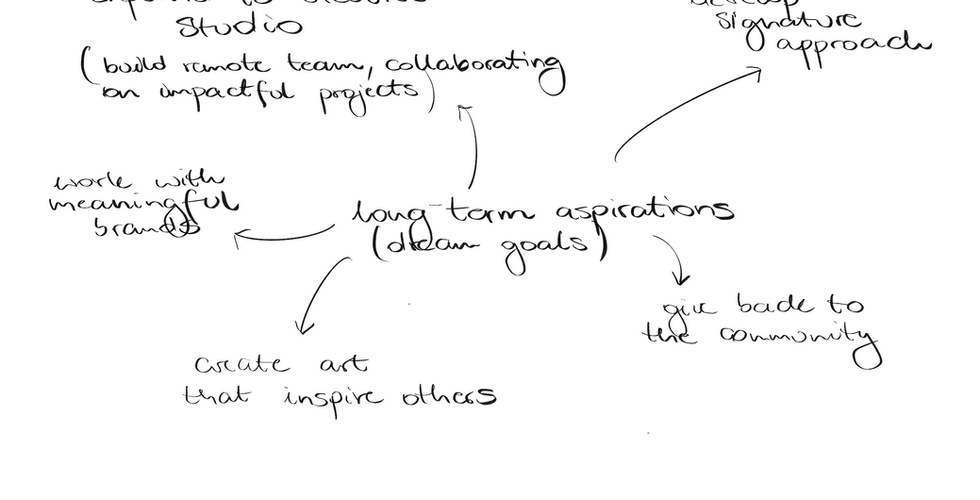

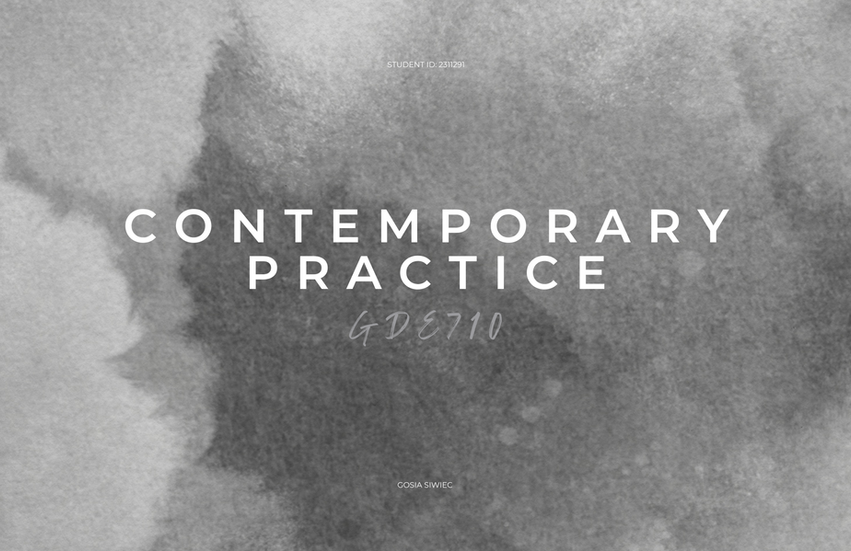

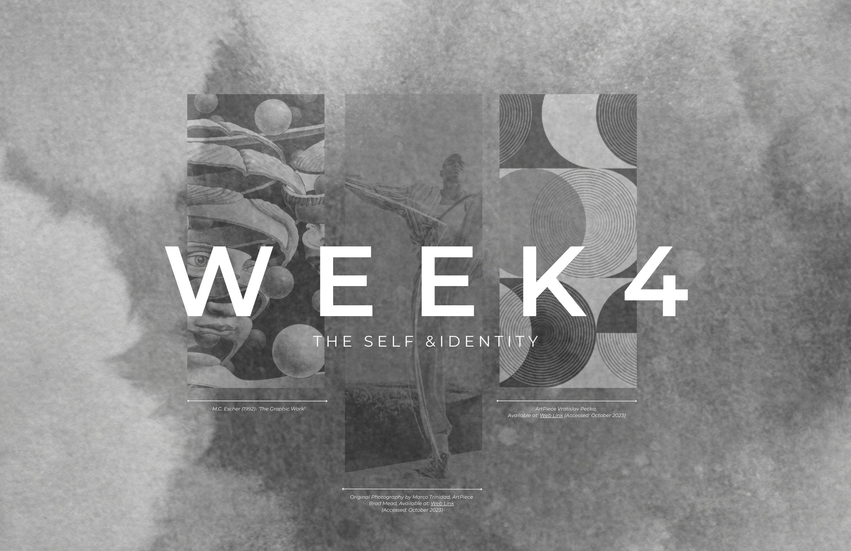

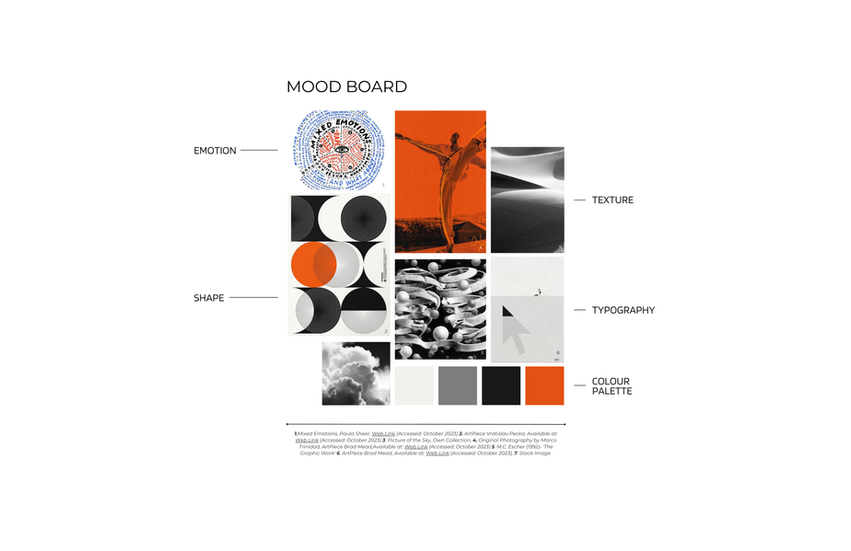

































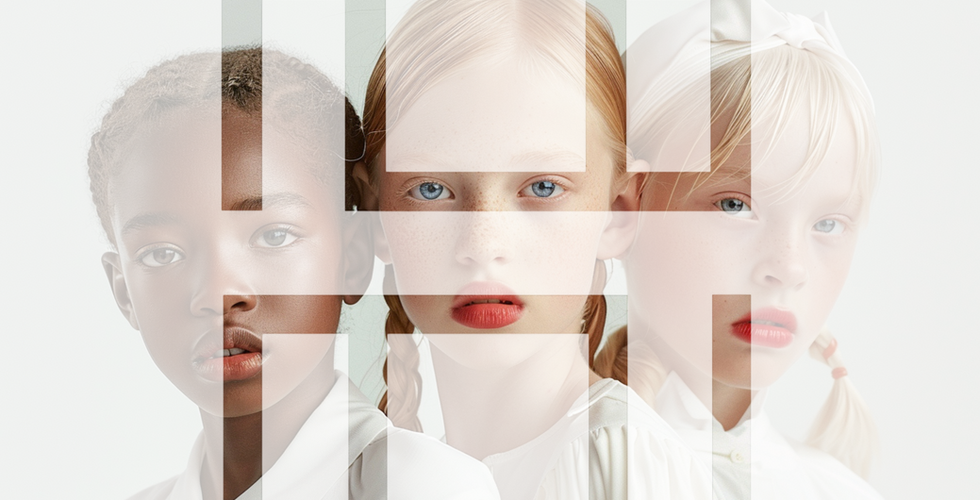





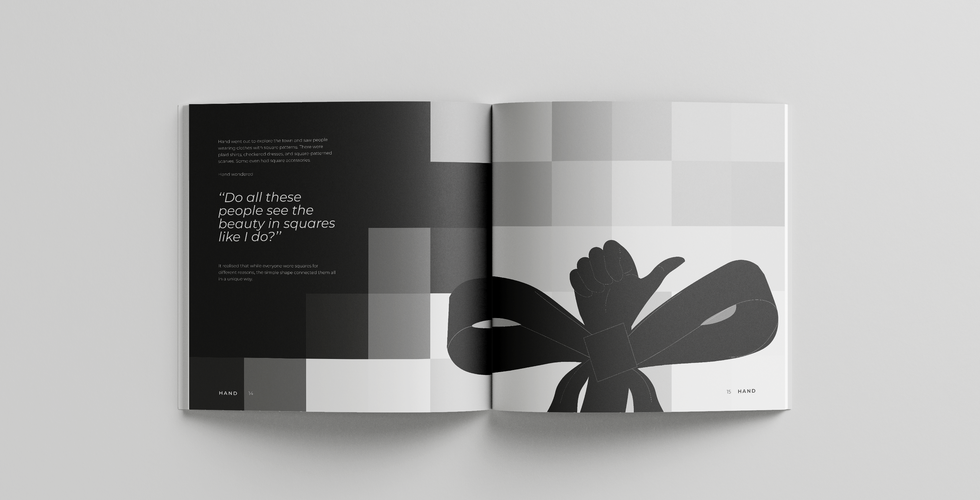





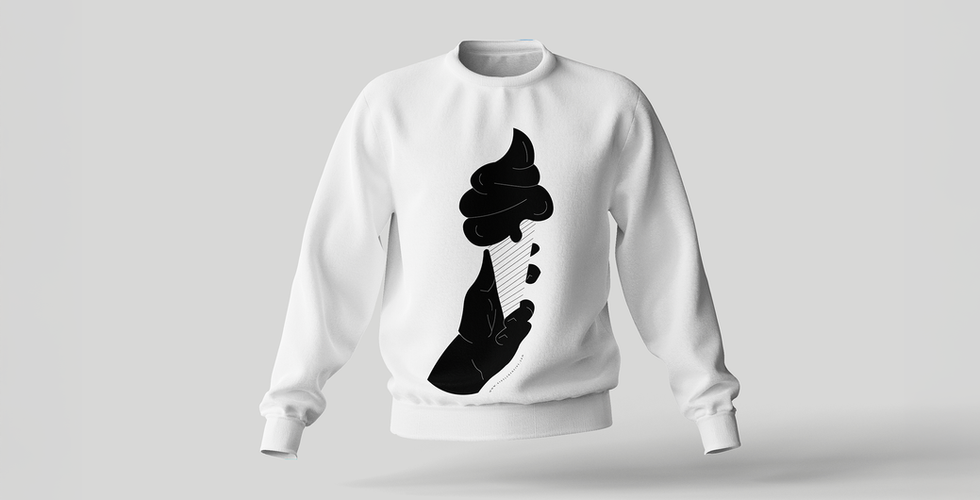











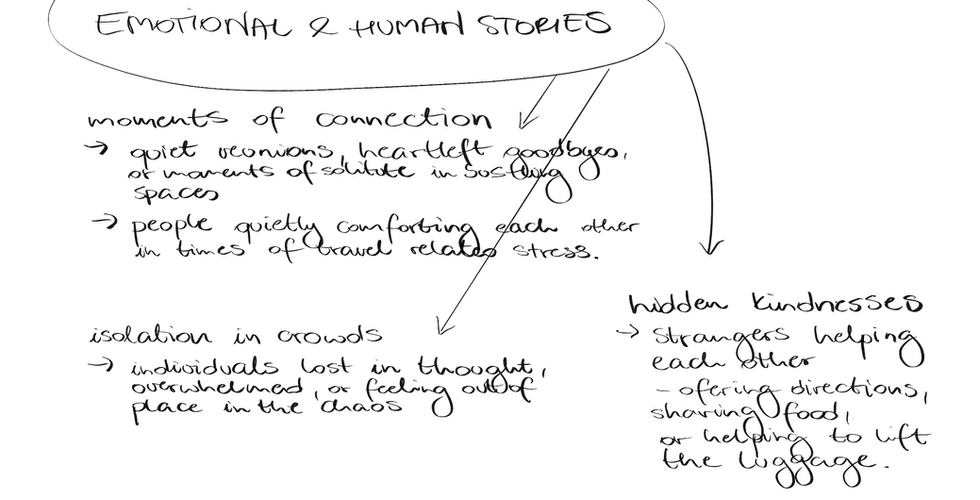




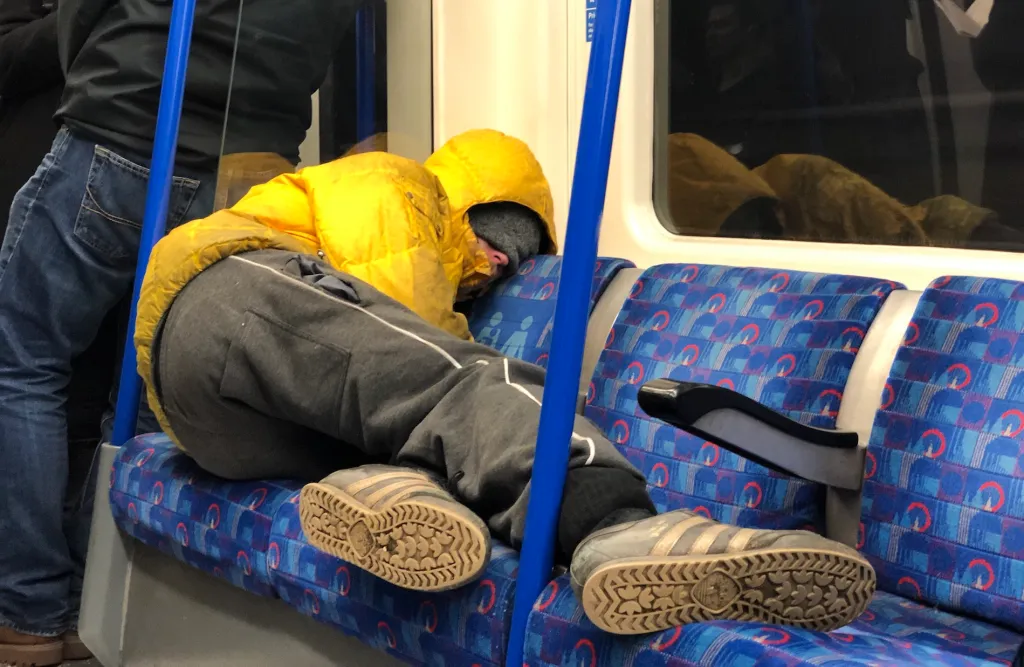
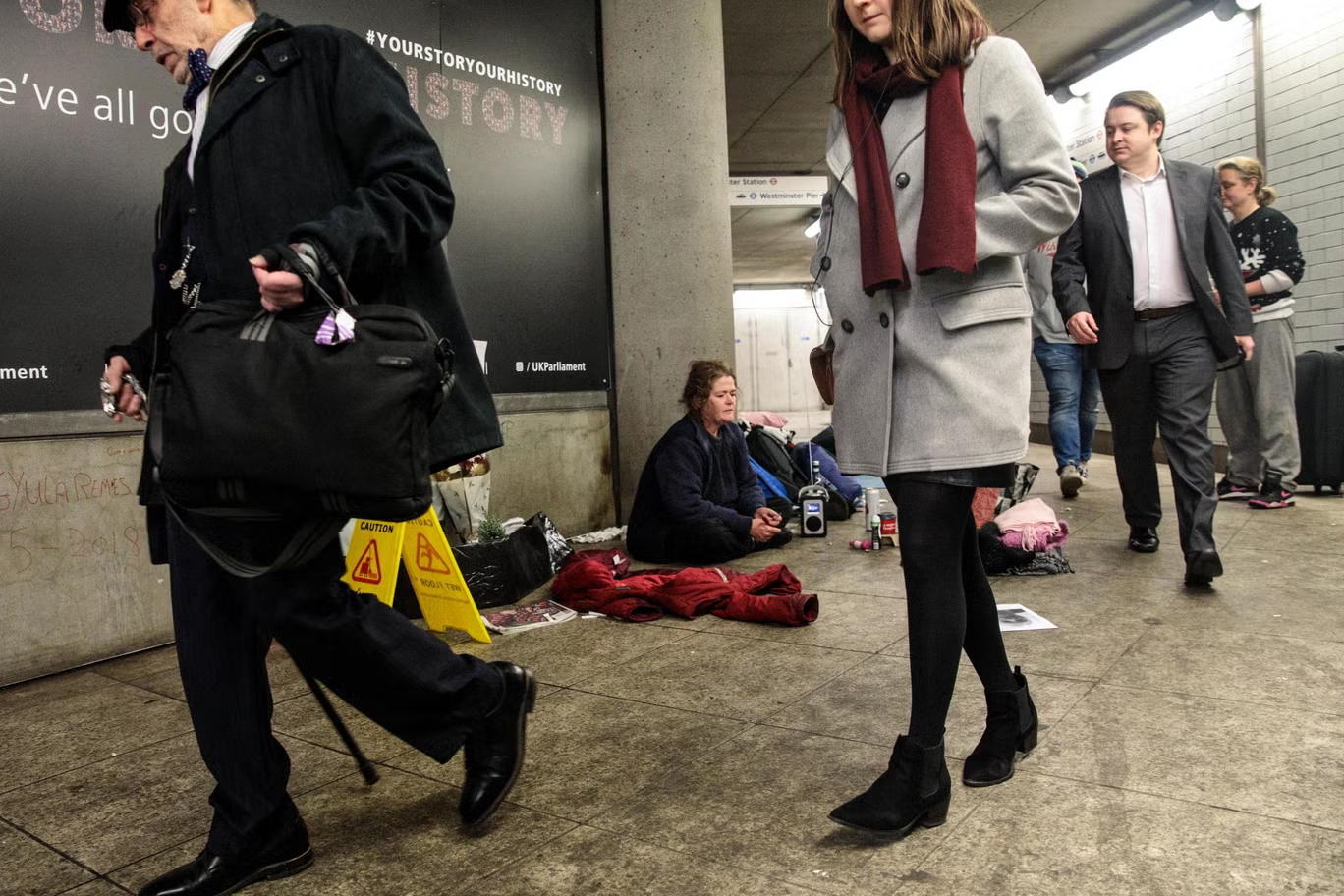
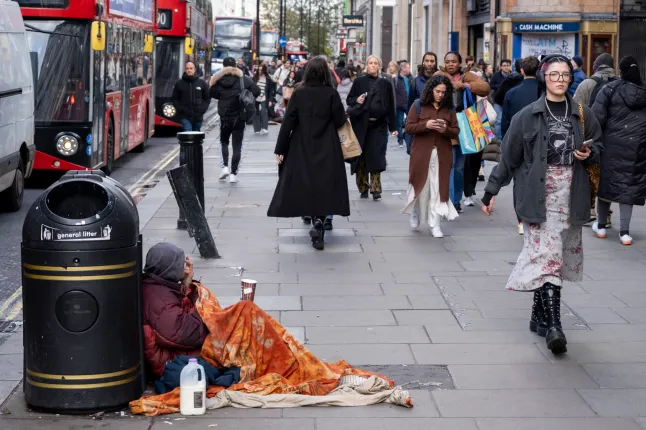
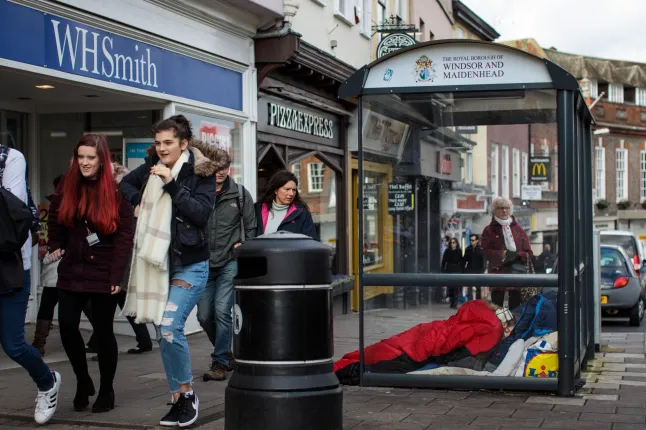






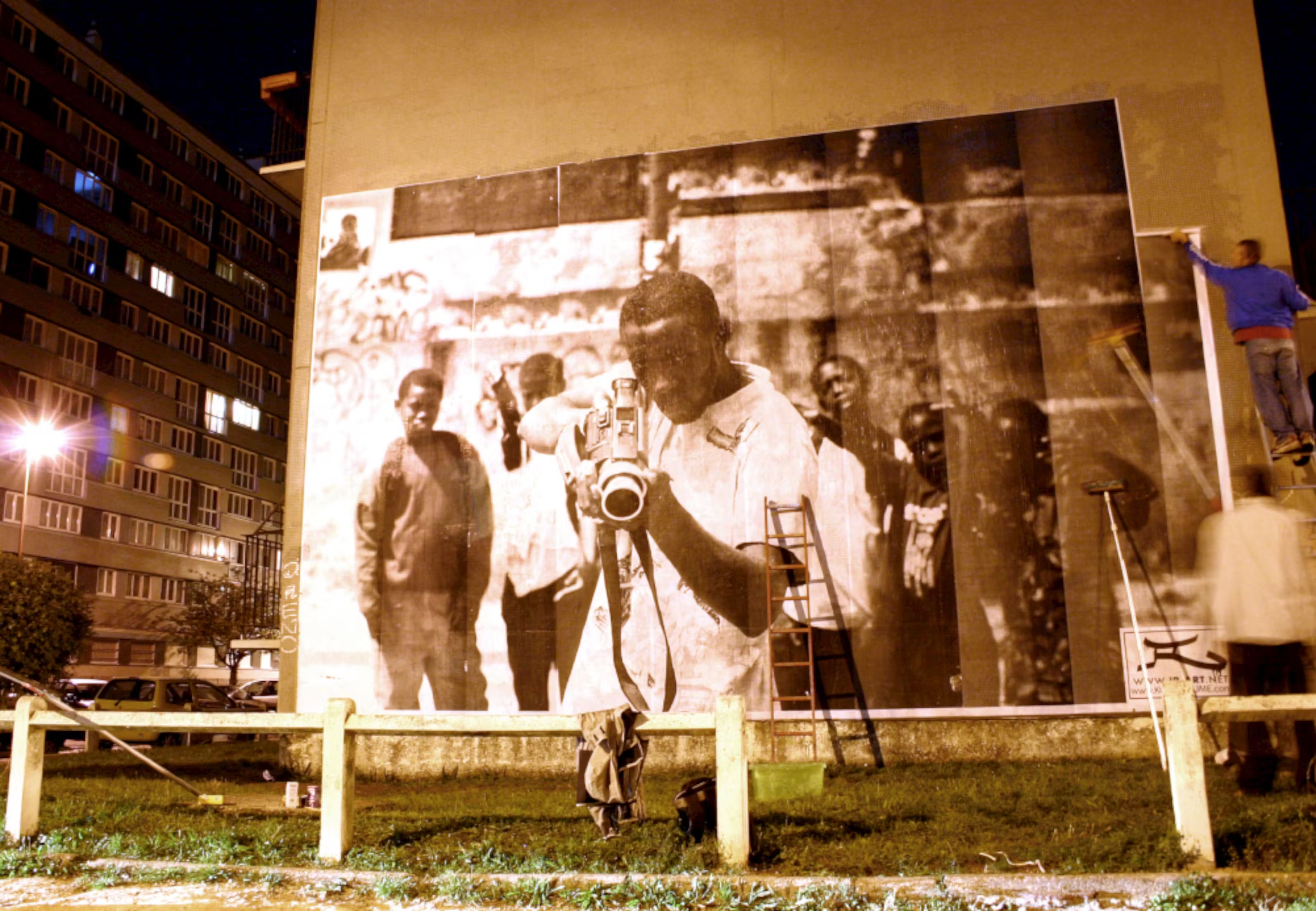
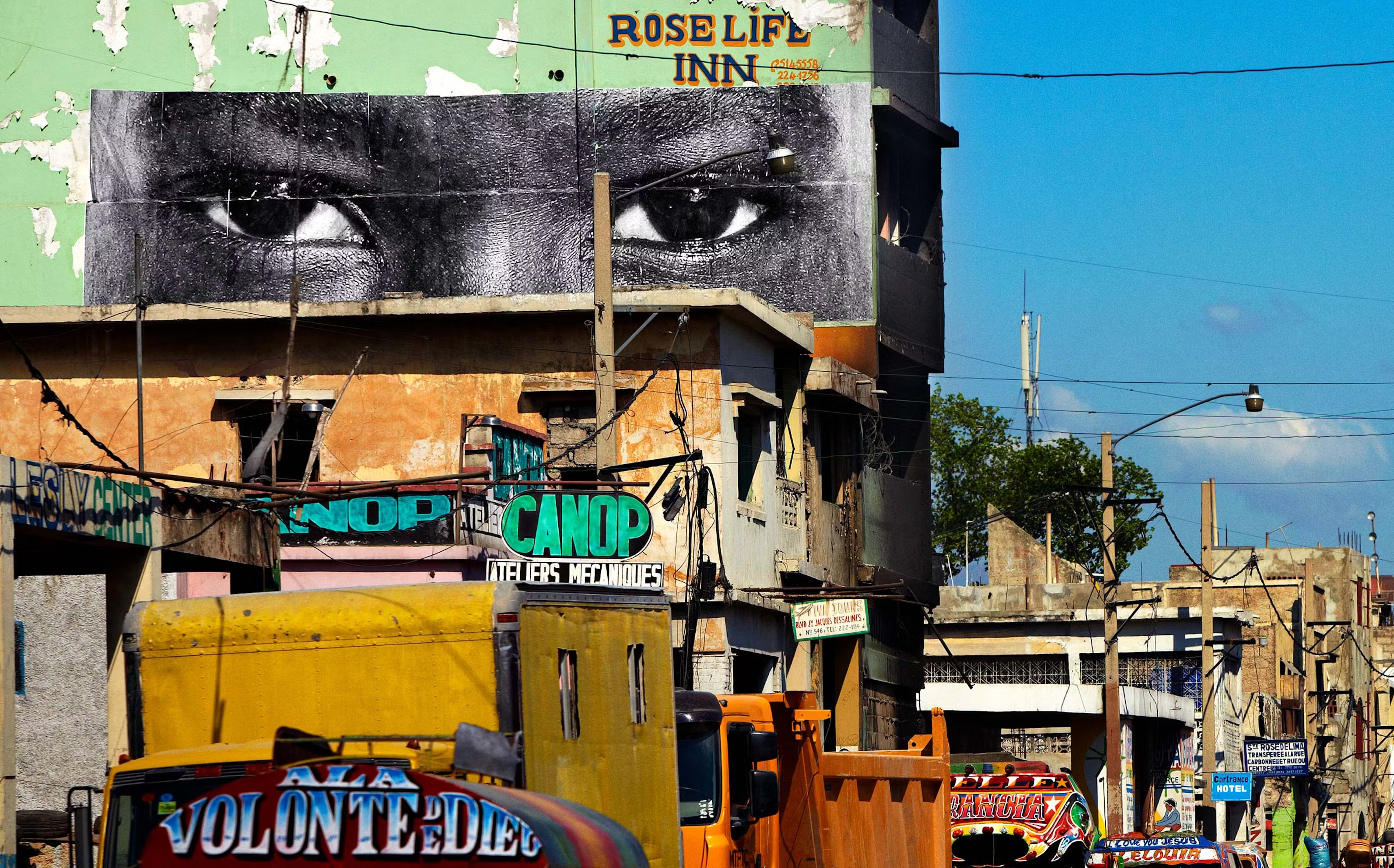
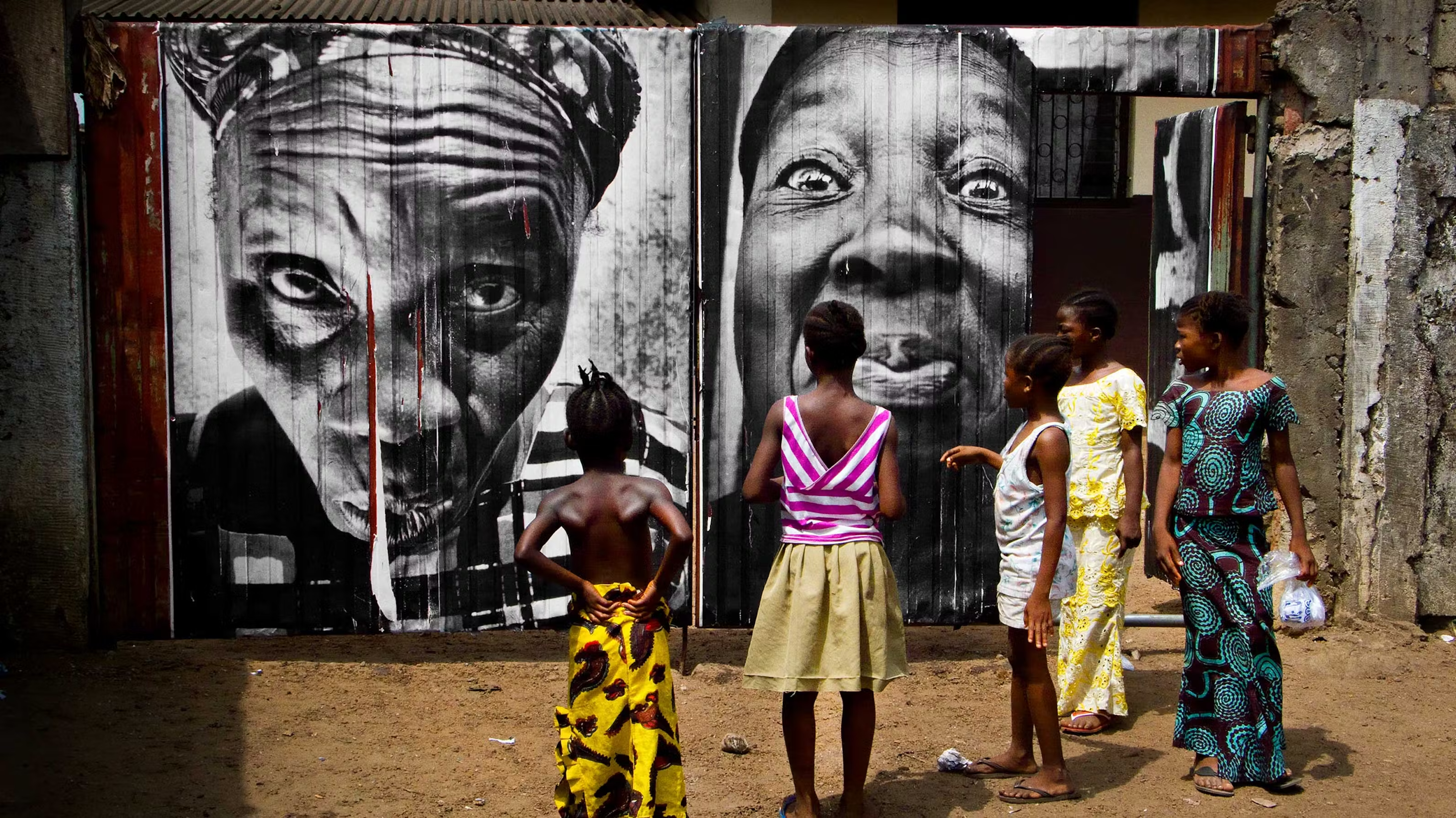


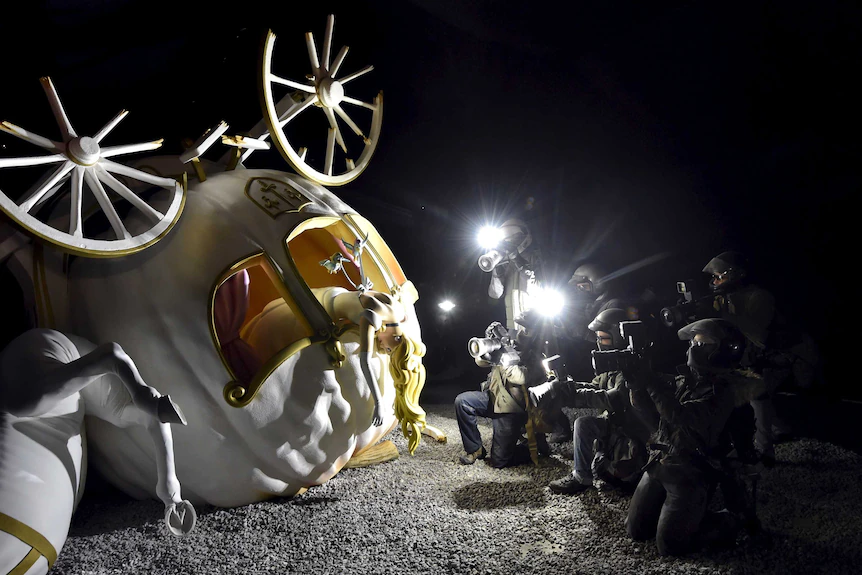
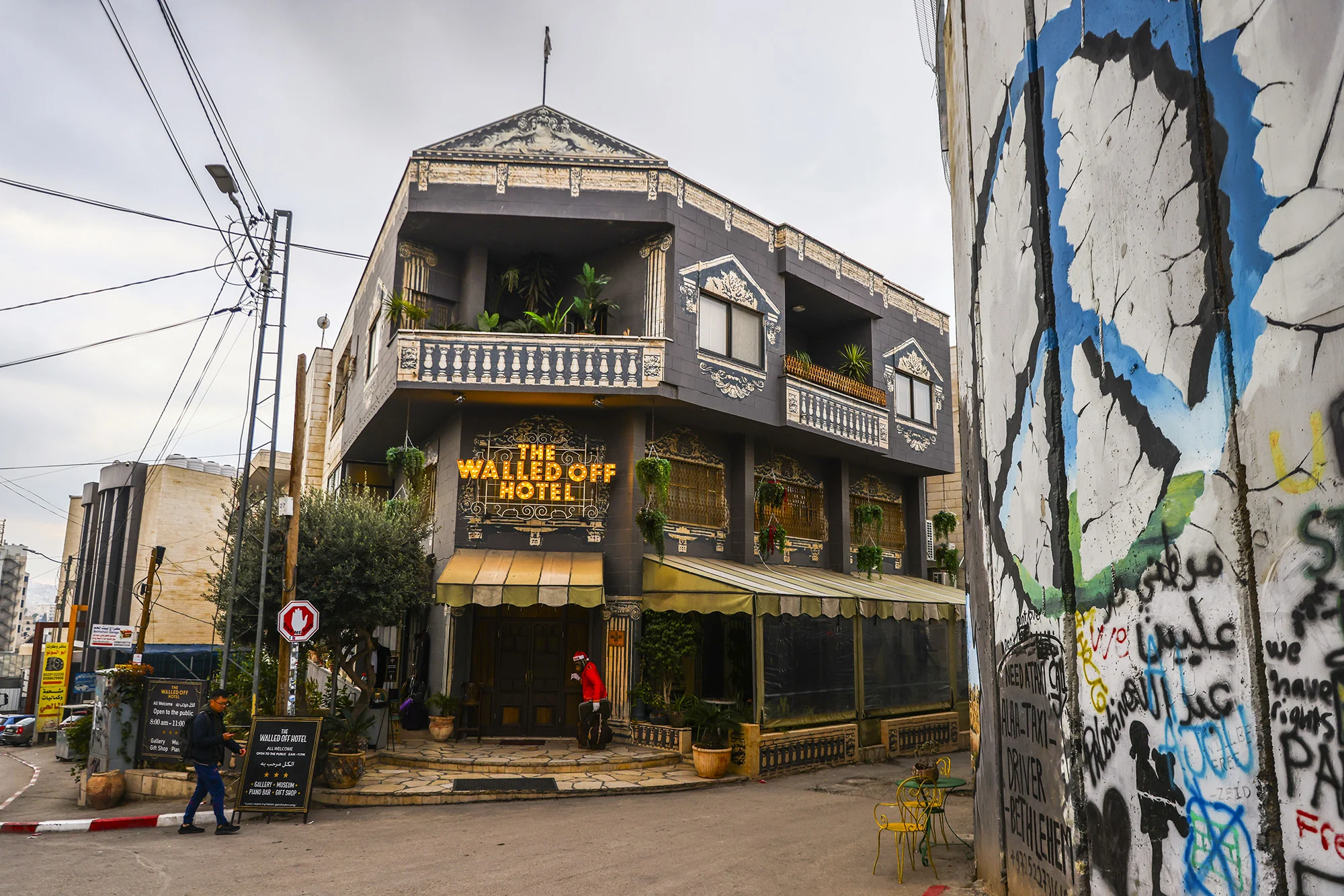



Comments